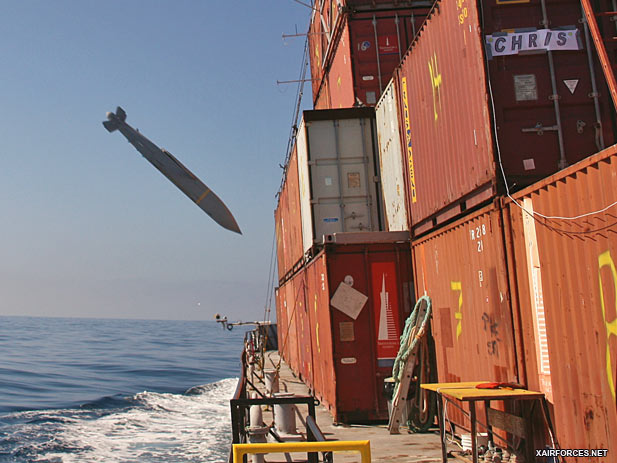
U.S. Navy conducts JSOW (Joint Standoff Weapon) C-1 free-flight testing

The U.S. Navy completed the first free-flight testing of the Joint Standoff Weapon C-1 variant at Point Mugu Sea Range Calif., July 26.
Free-flight tests are done to verify that the weapon's characteristics meet the performance requirements in the design. Tuesday’s event was the first end-to-end functionality test of an inert JSOW C-1, from pre-flight to target impact.
"The successful outcome of free-flight testing marks another important milestone achieved by the dedicated men and women of PMA-201," said Capt. Carl Chebi, Precision Strike Weapons (PMA-201) program manager. "JSOW C-1 will provide a much needed Network Enabled Weapon capability to the fleet."
A team from Air Test and Evaluation Squadron (VX) 31 deployed the test weapon from an F/A-18F Super Hornet. On shore, an Integrated Battlespace Arena asset, an advanced simulation facility, maintained the Link 16 network – a secure military tactical data exchange – and managed the network messages. The target for the test was an unmanned 260-foot long Mobile Ship Target(MST).
After the weapon achieved Link 16 net-entry, it was launched and began receiving in-flight target updates via the weapon data link on the moving target. It successfully acquired the MST autonomously and guided to the predetermined aim point on the ship.
"The accomplishment of this free-flight test has advanced the program closer to providing a standoff weapon that the aircrew can provide target updates after weapon separation," said Lt. Cmdr. Samuel Hanaki, JSOW Deputy Program Manager. "Precisely engaging moving maritime targets is a needed capability for the warfighter and we are working diligently to provide this weapon to the fleet."
The JSOW is an air-to-ground, medium-range precision guided, glide weapon that employs a GPS/inertial navigation system and an infrared seeker for terminal guidance. The JSOW C-1 variant adds a Link 16 weapon data link for in-flight target updates and upgraded seeker software to autonomously target and strike a specific aim point on a moving ship.
The JSOW C-1 will be the first Network Enabled Weapon in the military’s inventory and the first weapon with the capability to precisely strike moving maritime targets.
This test was the first of two planned developmental test free-flights. Following the developmental test phase, the program will enter an integrated test series of free-flights prior to operational testing.
Initial operating capability of the JSOW C-1 is scheduled for 2013.
PMA-201 is responsible for the research, development and acquisition of the fleet's air-to-ground precision guided weapons, general purpose bombs, and aircraft armament-related equipment.
Source: NAVAL AIR STATION PATUXENT RIVER, Md. - 29 July 2011 - PEO(U&W) Public Affairs (www.navair.navy.mil)
Photo: The Navy completes the first free-flight testing of the Joint Standoff Weapon C-1 variant at Point Mugu Sea Range Calif., July 26.(U.S. Navy photo)
(13.07.2011)
|